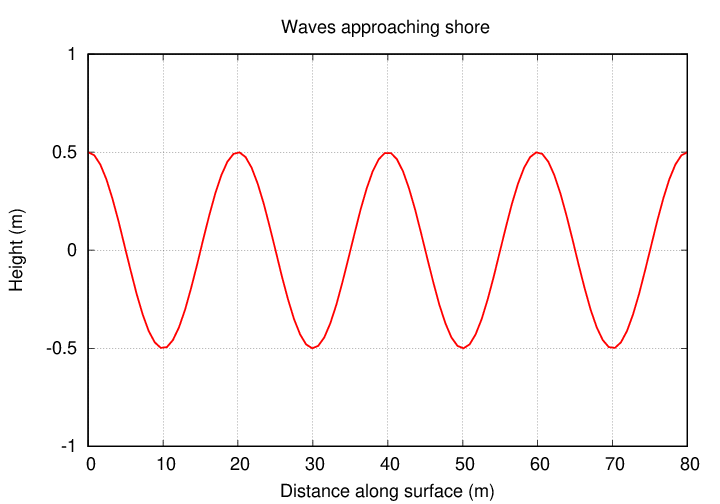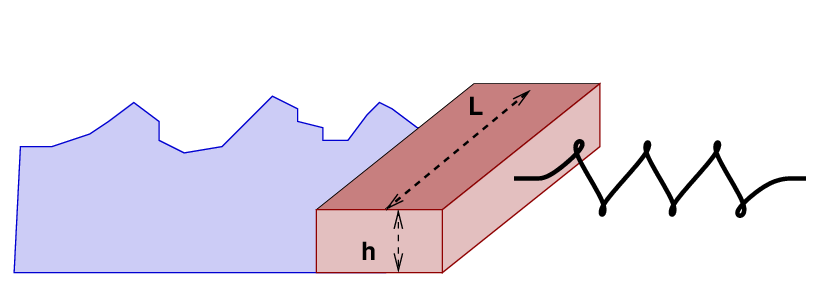

Can we power a typical American household by capturing the power of the ocean waves? Let's find out.
Just off the shore of Boston, waves ceaselessly crash into the shore. The picture above shows a typical profile of the waves as they approach the shore. Jacques watches a buoy bob up and down as it floats; he notes that it takes 6 seconds to make one complete cycle.
Jacques builds a device to capture some of this energy: a slab of wood, L = 5 m wide by h = 1 m high, which is attached to a spring. Waves will push the slab back and forth, and the spring will transfer that energy to a battery.

A typical American household uses about 1000 kiloWatt-hours of energy each month.